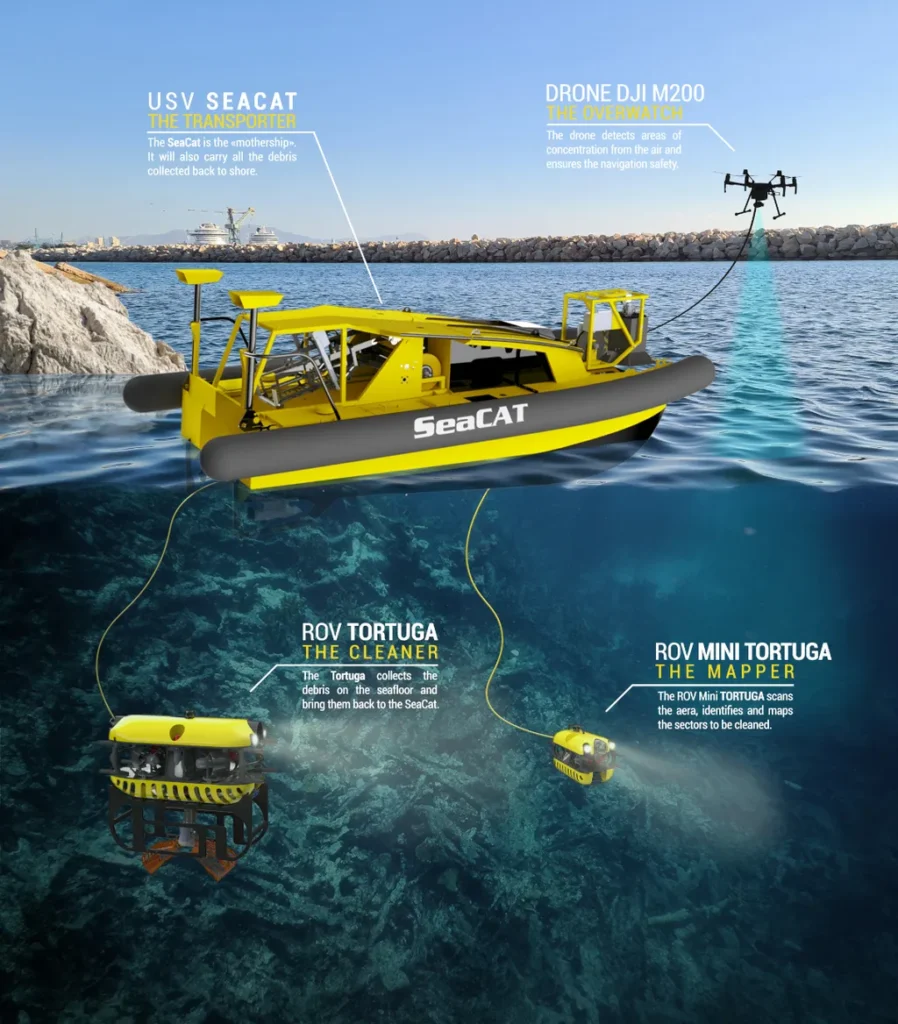The world’s oceans are drowning in plastic, with millions of tons of waste littering the seafloor and shorelines, and more added every year. This environmental crisis is a monumental challenge to tackle, given its scale, the ongoing addition of plastics, and the difficulty of accessing hard-to-reach locations. However, a glimmer of hope has emerged in the form of an innovative project called SeaClear2.0, which is deploying a fleet of autonomous robots to combat this growing problem.
SeaClear2.0, which began in January 2023 and will continue through December 2026, builds upon the success of the original SeaClear project (2020-2023). The initiative brings together an international team of partners from various sectors, including business, technology, research, and non-profit organizations, hailing from Croatia, Cyprus, France, Germany, Italy, the Netherlands, Romania, Spain, and Israel. The project is still in a stage of constant testing and innovation, pushing the boundaries of how we address plastic pollution in our oceans.
The robotic system of SeaClear2.0 consists of six remote and autonomous robots, each with unique specialties. In the sky, a drone called the SeaHawk identifies areas of litter. On the water’s surface, three uncrewed surface vehicles (USVs) work in tandem. The SeaCAT USV serves as the central point of communication and coordination, delegating tasks to other robots. The SeaDragon, a smaller and lighter USV, collects plastic from the SeaCAT and transports it to the coast. The SeaBee, composed of two mini robots, tows a net to collect floating debris.
Beneath the water, two robots operate autonomously. The Smart Grapple, connected to the SeaCAT, uses thrusters to move about and grab plastic litter, bringing it back to the surface. The Mini TORTUGA ROV (Remotely Operated Vehicle) maps the seafloor, sending information to the SeaCAT about the location of plastic waste.
SeaClear2.0 is not just about deploying robots and hoping for the best. The project takes a targeted, mission-centered approach, addressing the specific challenges each region faces. For instance, a stakeholder workshop in Marseilles, France, in September 2025, focused on the problem of plastic waste from the Rhône ending up in the surrounding sea and shorelines. The workshop highlighted issues such as the city’s dense population, high levels of tourism, and lack of strong waste management infrastructure.
These problems were translated into actionable tasks for SeaClear2.0. The project aims to analyze high-impact areas of waste and how it moves around the city. For example, the robots can remove e-scooters and rental bikes that are vandalously tossed into the water. Additionally, SeaClear2.0 is pushing for policy and operational changes, such as improving city waste management practices and reducing the amount of single-use plastics sold.
Through workshops and publications, SeaClear has positioned itself not just as an innovative robotic system but as an international mission focused on tackling the source of the problem and not just the outcome. When SeaClear2.0 concludes at the end of 2026, it will be intriguing to see the impact of all the work done. As other initiatives, like inventors turning plastic into fuel, also strive to address the same problem, the collective effort could potentially revolutionize the water, sanitation, and drainage sector.
The success of SeaClear2.0 could inspire similar projects worldwide, leading to a more coordinated and technological approach to tackling plastic pollution. It could also drive innovation in waste management practices, policy changes, and public awareness campaigns. Moreover, the data collected by the robots could provide valuable insights into the sources and movements of plastic waste, informing future strategies and interventions.
However, challenges remain. The scalability of such projects, the need for continuous innovation, and the importance of addressing the root causes of plastic pollution cannot be overlooked. The water, sanitation, and drainage sector must continue to evolve, embracing technological advancements and fostering international collaboration to combat this global crisis effectively.

